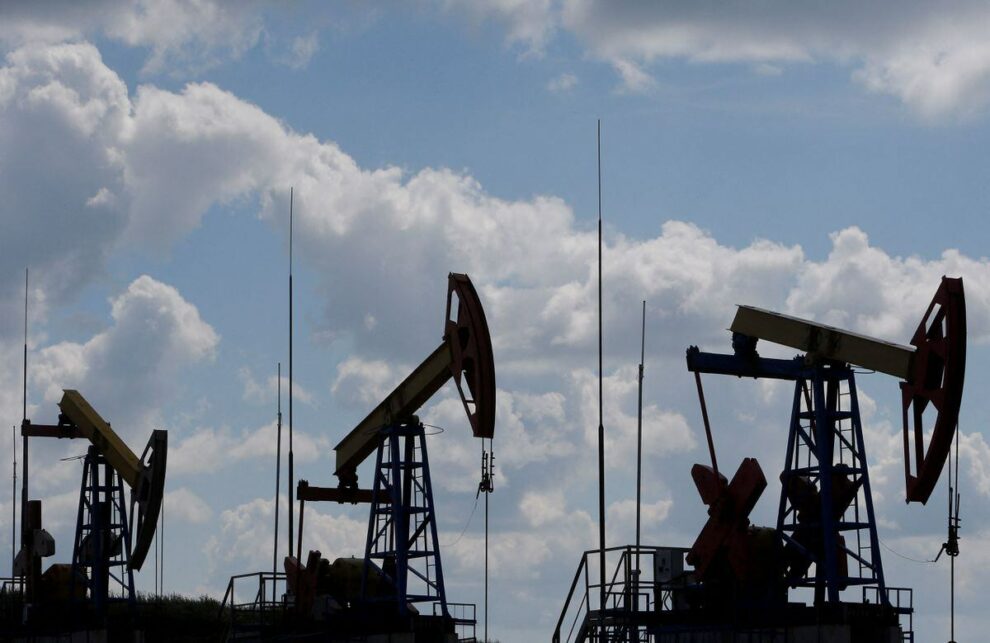The Astro Sculptor oil tanker was already showing its age in February 2020 when inspectors reported problems with corroded decks and propulsion machinery on the then 17-year-old Greek-run ship. But nearly four years later the vessel is still ploughing the oceans — part of the “shadow fleet” of secretively run tankers assembled by the Kremlin and its partners to move Russian oil after its full-scale invasion of Ukraine in February 2022.
This armada of ageing tankers has helped Russia absorb the shock of the extensive western sanctions imposed on it one year ago when the EU banned imports of Russian crude into the bloc and, with the G7 group of industrialised nations, imposed restrictions on those wanting to ship it to other parts of the world.
Under the rules — conceived in June 2022 and enforced in December last year — countries outside the G7, such as India and China, could continue to buy Russian crude but would have to pay less than $60 a barrel if they wanted to use G7-registered ships, trading or insurance services to move the oil. G7 members are the US, Japan, Germany, France, Italy, the UK and Canada.
The measures were designed to keep Russian oil on the international market while undermining the Kremlin’s ability to finance its war in Ukraine. Together they have redrawn the global energy map. Flows of Russian oil into Europe, previously its biggest export market, have shrunk to a trickle. Instead, millions of barrels are shipped every day from Russia’s western ports on the Baltic Sea and Black sea, on a circuitous journey to new buyers, mainly in India, China and Turkey.
But while the EU embargo has been effective in choking off most supplies into the bloc, western officials have acknowledged that 12 months later almost none of the Russian crude flowing to new buyers is selling at under $60 a barrel. “In the first quarter the cap worked well, in Q2 Russia started to find ways around it, in Q3 the cap was almost over and now in Q4 the cap is definitely done,” said Maximilian Hess, founder of political risk group Enmetena Advisory.
The near universal violation of the price cap has been made possible by weaknesses in enforcement but also by Russia’s success in building a network of vessels, such as the Astro Sculptor, to move its oil, outside the reach of the G7. “The global crude oil market, which had become highly efficient and globally consistent, is now being bifurcated into essentially two stovepipes, one of which is the shadow fleet and the other of which is the good guys,” Geoffrey Pyatt, US assistant secretary of state for energy resources, told the Financial Times in an interview last week.
Kyiv School of Economics, which has been studying evasion of the price cap, estimated that in October, 99 per cent of seaborne exports of Russian crude were sold at prices above $60 a barrel. Of those shipments, 71 per cent involved vessels and service providers outside of G7 countries, up from only 20 per cent in April 2022. Kpler, a data and analytics company, divided the vessels moving Russian oil into three main groups: Russian-owned vessels; so-called “dark fleet” vessels previously involved in moving sanctioned crude from Venezuela or Iran; and the “grey fleet” assembled since the invasion.
In November, the grey fleet accounted for more than half of oil exports from western Russia for the first time, Kpler’s data shows. Grey and dark fleet vessels, sometimes collectively called the shadow fleet, use opaque ownership structures, routed through offshore jurisdictions with strong corporate secrecy, to complicate sanctions enforcement on the beneficial owners. The Astro Sculptor, which was sold in 2022 and renamed the Amber 6, is a typical example of a “grey” fleet vessel.
No longer Greek, the tanker is managed by a Chinese company based in the city of Dalian, flies a Liberian flag and no longer holds insurance from a western provider. Greece-registered vessels remained the second-largest conveyors of Russian crude in November, but their 16mn barrels were dwarfed by the 28mn barrels moved by tankers registered by the UAE and 23mn by China- and Hong Kong-run ships, based on an FT analysis of the listed correspondence addresses of vessels.
“For the first half of this year, the price cap wasn’t under much pressure because prices were low enough, but since the summer, Russia’s grey fleet has allowed it to enjoy the benefits of rising global prices,” said Matthew Wright, an analyst at Kpler. “What the US does to hit back against these vessels is now the big unknown.” Pyatt said the US government was watching the shadow fleet “intently”, looking for ways to make it “less effective and less operational”.
Washington imposed targeted sanctions in October on two companies, one registered in Turkey and the other in the UAE, its first enforcement action linked to the rules. The companies each owned a vessel that had used US-based service providers while shipping Russian oil bought at prices above the cap, it said.
The challenge for the US and other western governments is that much of Russia’s new crude system has no need for western service providers. “Russia’s been quite successful at building up its own fleet, finding alternative insurance, building an ecosystem of people who can help move crude and products” said Ben Cahill, a senior fellow at US-based Center for Strategic and International Studies, who has studied the west’s energy sanctions on Moscow. “It’s hard to put the genie back in the bottle.”
Source : Financial Times















